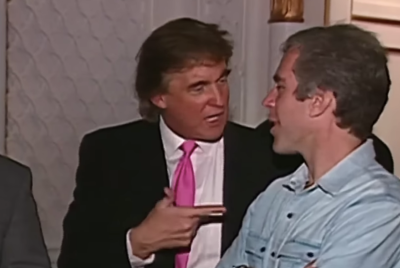Lee Harvey Oswald: What Jack Ruby Claimed Before His Death and Why It Still Matters
Ruby's evolving statements reflect the unresolved impact of the Oswald case

Fresh interest in the Lee Harvey Oswald case has emerged as historians re-examine the final claims made by Jack Ruby before his death.
Ruby, the nightclub owner who fatally shot Oswald on live television in November 1963, left behind a series of statements that continue to influence public understanding of the events that followed the assassination of President John F. Kennedy.
His shifting explanations, documented through police interviews, court records and later medical evaluations, remain central to ongoing questions surrounding motive, mental state and the wider consequences of his act.
The Critical Turning Point After the JFK Assassination
Oswald was arrested on 22 November 1963 after Kennedy was shot during a motorcade in Dallas, Texas.
Two days later, as police prepared to transfer him to the county jail, Ruby stepped forward in a basement crowded with officers and reporters.
He fired a single shot at Oswald, who died shortly afterwards in a nearby hospital. The killing deprived investigators and the public of a full trial, leaving key aspects of Oswald's actions and intent permanently unresolved. Ruby was arrested immediately and charged with murder.
🧵 1/ On this day in 1963, Lee Harvey Oswald—the man accused of assassinating President Kennedy—was shot dead on live TV by nightclub owner Jack Ruby while being transferred from Dallas police headquarters. Two days after JFK's murder, Oswald never got his trial. The official... pic.twitter.com/386jlABorC
— Manifest History (@ManifestHistory) November 24, 2025
Ruby Said He Acted to Spare Mrs Kennedy Further Trauma
Ruby's earliest and most consistent claim, recorded in police interviews and referenced in later reporting by People, was that he acted to protect Jacqueline Kennedy from the ordeal of a prolonged trial.
He said he had been deeply affected by the images of her grief following her husband's assassination.
Ruby insisted his action was rooted in compassion rather than premeditation, and investigators documented that he appeared emotionally distressed in the days that followed.
Shifting Explanations Highlighted His Deteriorating State
As Ruby remained in custody, his explanations began to shift. At various points he claimed that Jewish people were being threatened and that extremist groups were involved in larger plots.
Court records and medical assessments indicated his mental health was deteriorating, with doctors noting symptoms of paranoia, delusions and confusion.
Ruby later stated that he believed he was being poisoned in jail. While these claims were recorded, investigators found no evidence supporting them. His deteriorating mental state became a significant point of concern during appeals and medical examinations.
Ruby Insisted He Acted Alone
Despite his shifting theories, Ruby consistently denied being part of any organised effort. He repeatedly stated that no individual or group directed him to kill Oswald.
The Warren Commission, which examined the assassination and subsequent events, concluded that it found no verified link between Ruby and a broader conspiracy. His insistence became a central component of the official public record and remains a key reference point for historians examining the case.
Legal Challenges Shaped the Final Months of Ruby's Life
Ruby was convicted of murder and sentenced to death in 1964. His legal team appealed the decision, arguing that the trial had been compromised by extensive pre-trial publicity.
A court later overturned his conviction, ordering a new trial. Ruby remained in custody as the appeals process continued.
He died in January 1967 from lung cancer, leaving unresolved questions regarding the legal outcome of his case.
Why These Claims Continue to Matter
Ruby's statements remain significant because they shaped the trajectory of the investigation and the public's understanding of Oswald's death.
Polling over the years indicates that a majority of Americans continue to question whether Oswald acted alone, keeping Ruby's motives at the centre of ongoing debate.
Each release of assassination-related documents prompts renewed scrutiny of his explanations and their impact on the justice system.
For many historians, the consequences of his single act continue to influence how the United States confronts issues of transparency, accountability and public trust.
© Copyright IBTimes 2025. All rights reserved.



















